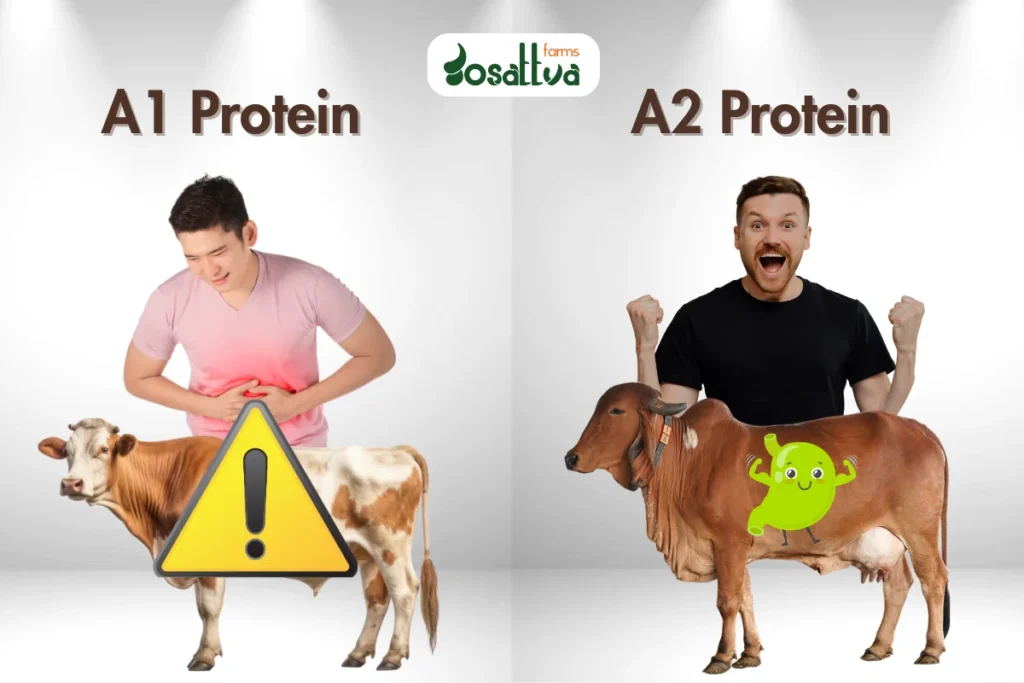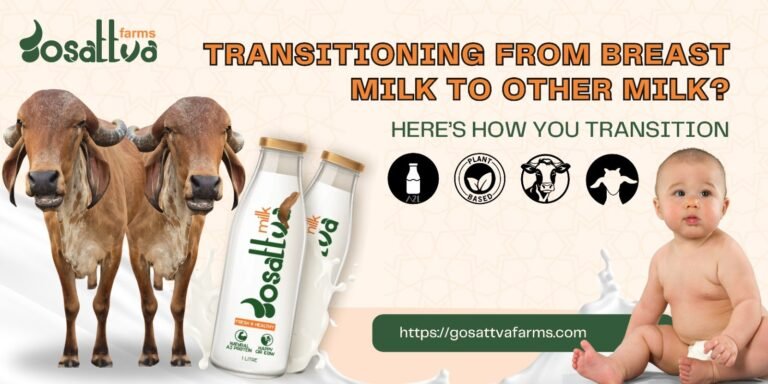If you’ve been shopping for milk lately, you’ve probably noticed A2 milk sitting on the shelf with a noticeably higher price tag than regular milk. But what exactly makes A2 milk special, and is it really worth paying extra? In this guide, we’ll break down the differences, health benefits, and costs so you can make an informed choice for you and your family.
What Makes A2 Milk Different?
A2 milk comes from cows that produce only the A2 type of beta-casein protein, unlike regular milk, which contains A1 and A2 proteins.
When digested, A1 beta-casein can release a peptide called BCM-7 (beta-casomorphin-7).
Some studies suggest BCM-7 may cause digestive discomfort in sensitive people, such as bloating, gas, or IBS-like symptoms.
A1 is often linked to milk intolerance in certain individuals.
Important Note:
A1 vs. A2 is not the same as lactose intolerance. Lactose intolerance is about sugar (lactose) in milk, while A1/A2 relates to protein.
What makes A2 milk so special?

- Easier Digestion: Some studies suggest A2 milk is gentler on the stomach and may reduce bloating or discomfort in sensitive individuals.
- Traditional Breeds: A2 milk often comes from native Indian cows like Gir, Sahiwal, or Red Sindhi, which are known for their natural diet and quality milk.
- Natural Taste: Many people report a creamier and sweeter taste compared to regular milk.
Health Benefits of A2 Milk
- Easier Digestion
- Rich in calcium, protein, vitamins, and healthy fats
- Reduce Bloating and Gas
- Support Immune Health
- Better Nutrient Absorption
Price Comparison
A2 milk is more expensive than regular milk due to several factors:
| Milk Type | Approx. Price (INR) | Key Factors Affecting Cost |
| Regular Cow Milk | 55–83 / litre | Mass production, mixed breeds |
| Buffalo Milk | 71–87 / litre | Richer milk, local sourcing |
| Gossatva A2 Milk (Gir Cow) | 90 / litre | Native breed, hand-harvested, small-scale production |
Why the higher price?
- Small-scale dairy farming
- Ethical and natural feeding practices
- Natural lower yield per Gir cow (We don’t allow hormonal treatments for more yield)
- Careful hand-processing to preserve nutrients
Value Analysis: Is It Worth It?
Although A2 milk is pricier than regular milk, its benefits often outweigh the additional cost for certain groups. Children and toddlers, whose digestive systems are still developing, benefit from its easier digestibility, helping prevent bloating and discomfort while supporting healthy growth with essential nutrients. Similarly, elderly family members, who may experience reduced digestive efficiency with age, find A2 milk gentler on their stomachs and helpful in maintaining bone strength and overall well-being.
People with mild digestive issues also gain from A2 milk’s ability to avoid triggering discomfort, allowing them to include dairy in their diet without unnecessary stress. Health-conscious individuals who prioritise natural, nutrient-dense foods appreciate their sourcing from indigenous breeds raised on natural feed, making it a cleaner, more wholesome option. Beyond health benefits, intangible factors such as ethical farming practices, natural cow feed, and a superior taste further enhance the value of A2 milk, making it a worthwhile investment for families and individuals seeking both wellness and quality.
Tips for Buying Authentic A2 Milk
- Check Labels Carefully: Look for “100% A2 milk” and the cow breed mentioned.
- Local Sourcing: Buy from trusted local dairies that provide fresh delivery.
- Avoid Misleading Claims: Some brands mix A1 and A2 milk but still label it as A2. Confirm via certifications and reports.
- Storage: Keep refrigerated and consume within the expiry for the best taste and nutrition.
Conclusion
Yes, A2 milk is worth the higher price if you prioritise digestion-friendly milk, authentic sourcing, and better nutrition. Unlike regular milk, A2 milk contains a protein structure that is gentler on the digestive system, reducing the chances of bloating, gas, or discomfort for those who are sensitive to dairy.
It’s an excellent option for individuals who want to enjoy milk without worrying about digestive distress, allowing them to maintain a balanced diet while supporting overall health.
While A2 milk may not be a strict necessity for everyone, it offers significant advantages, especially for families with young children, elderly members, or anyone with mild digestive issues. Children benefit from its easy digestibility and essential nutrients that support growth and bone development. Elderly members, whose digestive systems may be weaker, find it easier to absorb nutrients without discomfort. Even for those with sensitive digestion, A2 milk can help maintain daily comfort and nutrition without triggering digestive problems.
Additionally, its authentic sourcing from indigenous cow breeds raised on natural feed ensures that you’re providing wholesome, high-quality dairy to your loved ones, making the extra cost a worthwhile investment in their long-term health.
FAQs
Q1: Can A2 milk replace regular milk completely?
Yes, for most people, it can be used in all recipes and beverages just like regular milk.
Q2: Is A2 milk suitable for toddlers?
Yes, A2 milk from native cows is gentle and safe for toddlers above 12 months.
Q3: Does A2 milk help with lactose intolerance?
It may reduce discomfort for some, but it’s not a substitute for lactose-free milk in severe cases.
✅ Final Tip: When buying A2 milk, go for brands or dairies that are transparent about the cow breed and milk sourcing. Quality matters more than price when it comes to your health.






